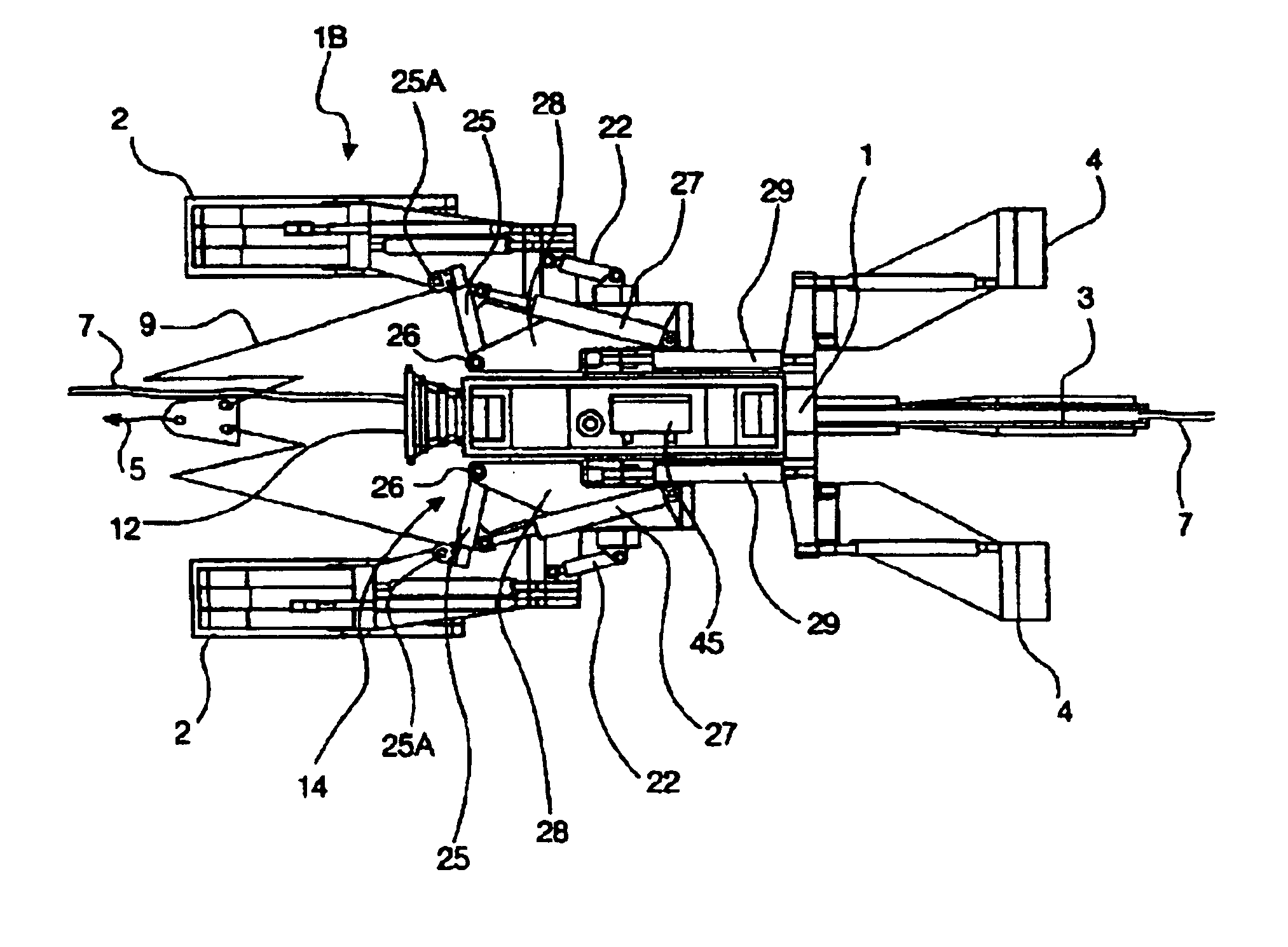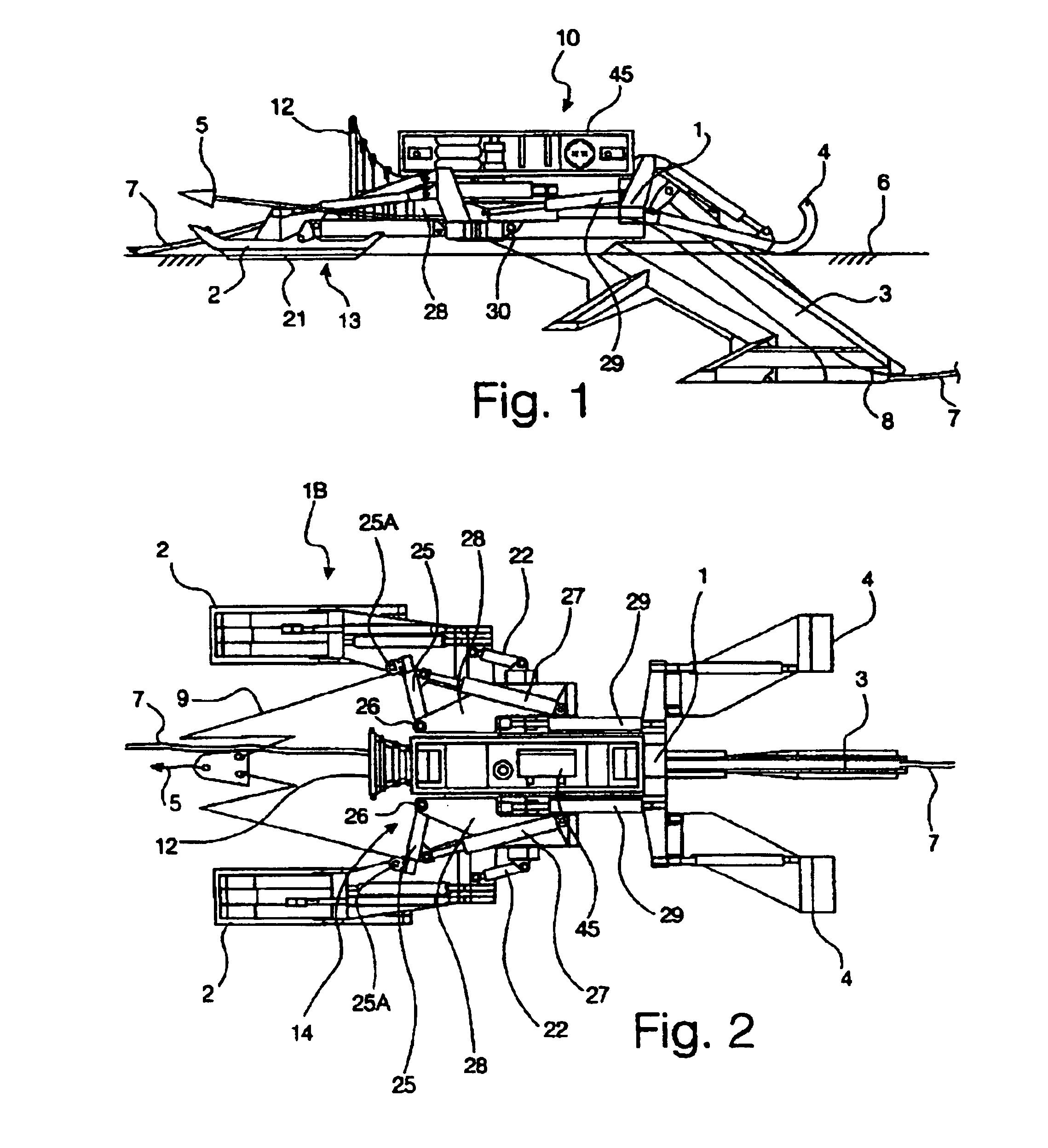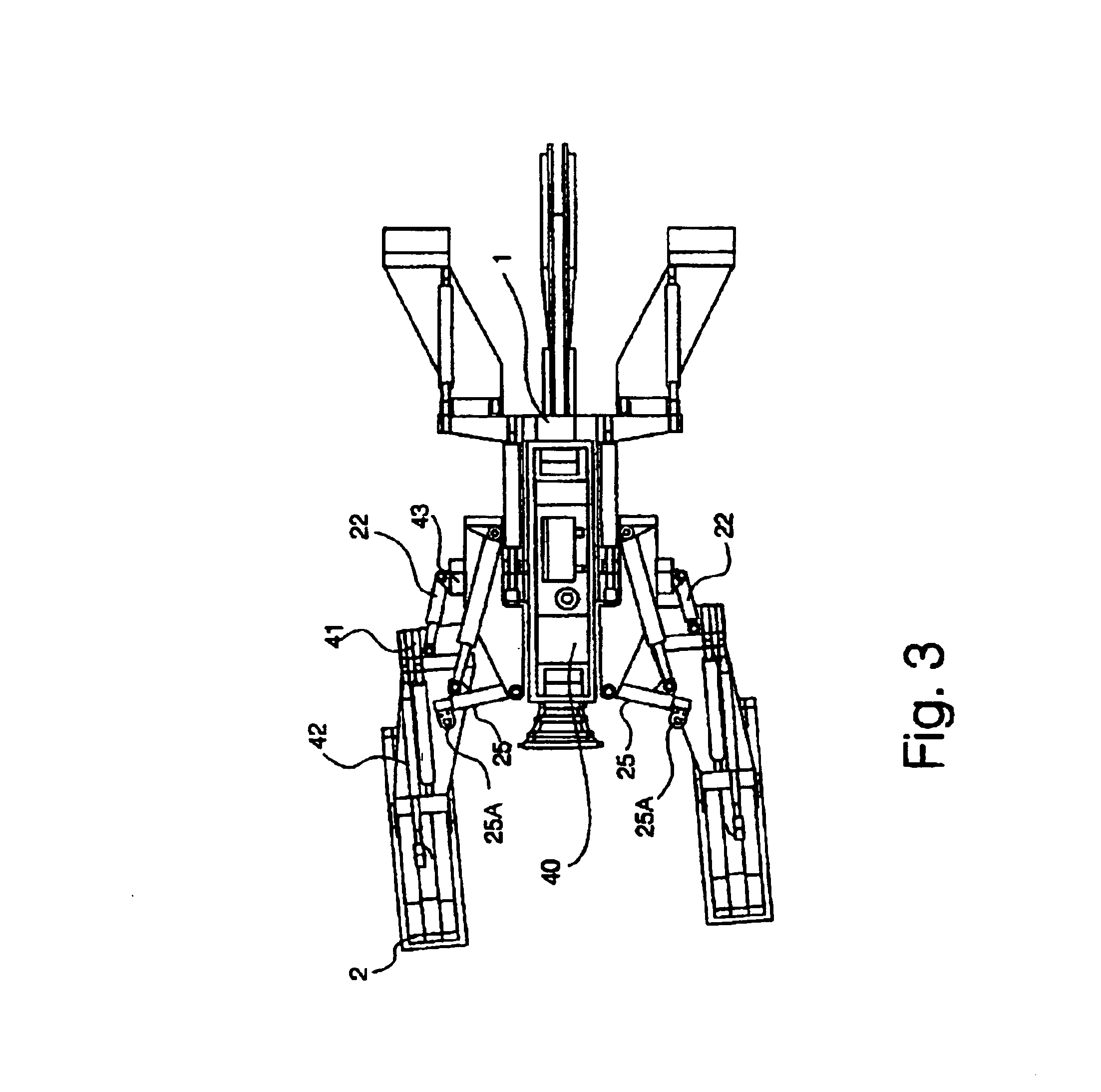Ploughs
- Summary
- Abstract
- Description
- Claims
- Application Information
AI Technical Summary
Benefits of technology
Problems solved by technology
Method used
Image
Examples
Embodiment Construction
Referring to the FIGS. 1 to 5, a seabed cable plough is made up of an elongate chassis 1, a share 3 at the rear of plough 10, and support skids (2 and 4) two each at the front and rear respectively. The front skids 2 support the plough on the seabed 6 and are adjustable by hydraulic rams 42 in FIGS. 3 and 5) to set the trenching depth of the plough. The share 3 penetrates the seabed as the plough is towed by a ship (not shown) via a towrope 5. Cable 7 to be buried enters the front of the plough at bellmouth 12 and exits underground at the back of the plough 8. Rear spaced skids 4 support the back of the plough when operating in very soft seabed soils. The plough may be fitted with a control and monitoring system and a hydraulic power pack, typically located on top of the plough at 45, allowing the operators on the ship to operate it effectively by controlling the position of the hydraulic rams. Alternative adjustment mechanisms to rams can be used although rams are particularly suit...
PUM
 Login to View More
Login to View More Abstract
Description
Claims
Application Information
 Login to View More
Login to View More - R&D
- Intellectual Property
- Life Sciences
- Materials
- Tech Scout
- Unparalleled Data Quality
- Higher Quality Content
- 60% Fewer Hallucinations
Browse by: Latest US Patents, China's latest patents, Technical Efficacy Thesaurus, Application Domain, Technology Topic, Popular Technical Reports.
© 2025 PatSnap. All rights reserved.Legal|Privacy policy|Modern Slavery Act Transparency Statement|Sitemap|About US| Contact US: help@patsnap.com



